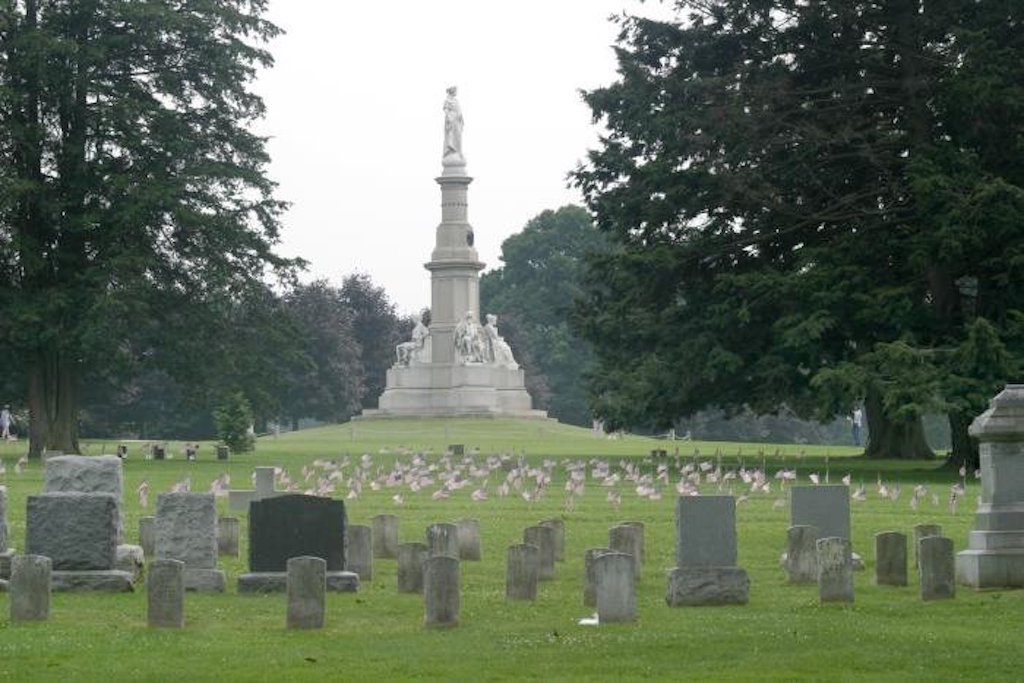The Civil War is, rightfully, remembered as the major conflict for America in the 19th century. America fought four major wars in the 1800s. But the deadliest American battle was a single three-day affair during the Civil War when more Americans lost their lives than in all other wars of the 19th century combined.
America fought four major wars in the years 1800 to 1899 as well as a series of fights against Native Americans. The major wars included the War of 1812 against the British Empire, the Mexican-American War, the Civil War, and the Spanish-American War.
The Macabre Math
The War of 1812 saw the tragic loss of 2,260 Americans in battle. Another 1,700 died in the Mexican-American War. In the Spanish-American War, America suffered 385 battle deaths. You can also include the Indian Wars in which 1,000 United States service members perished in battle. Approximately 5,500 Americans died in battle in the 1800s, excluding the Civil War.
But the Civil War was much worse for American troops with 215,000 dead between the two sides. At just the Battle of Gettysburg, 7,058 Union and Confederate soldiers became fatalities, more than all those other wars in the century combined.
So how did the Battle of Gettysburg result in so many casualties?
Most of the battles of the Civil War were significantly worse for a few reasons. First, when one population provides both sides of the battle, the losses are going to be worse. Also, the Civil War saw roughly equal forces squaring off. With neither side having a significant technological edge, like the U.S. had against both Mexico and Spain, the casualties rise.
Perhaps most importantly, the territory in dispute in the Civil War created existential stakes. The United States feared that one secession would lead to a dissolution of the republic. And the Confederacy knew that defeat meant a forced return to the fold. Neither side could back down.
And, the Civil War was a major turning point toward industrialized warfare as repeating rifles, more powerful artillery and rifles, and improved explosives coupled with old tactics. Attackers marched in large blocks directly into enemy artillery and rifle range. Defenders watched as rifled artillery tore through their fortress walls and other defenses.
But the Battle of Gettysburg was even worse than a normal Civil War battle. It was the deadliest battle in American history. The Confederacy attempted to build on its momentum from victory at Chancellorsville by invading Pennsylvania. The Union needed to stop this invasion before it got any deeper. And the Union forces had to stay between the Confederate force and Washington, D.C.

Stumbling into the deadliest battle
Neither force was inclined to back down, and they stumbled into each other in the town by accident. The Confederate troops were surviving off of foraged supplies and food, and so they had to keep moving. But their cavalry scouts weren’t providing timely intelligence. A Confederate unit looking for shoes in town stumbled, instead, into Union cavalry.
Once the battle got started, it took on a logic all its own. Mistakes and large gambles would exacerbate the eventual death toll. In one of the largest gambles of the war, Confederate General Robert E. Lee ordered a July 3, 1863 infantry charge against the Union positions on Cemetery Ridge. The infamous charge was led by General George E. Pickett, and it saw 12,500 Confederate soldiers attack in the midst of an artillery duel. The Confederates had many more guns on the field, but the Union weapons were better positioned and supplied. Some Union crews stopped firing and hid, essentially playing dead to let the Confederate infantry form up and draw into range.
Once the Confederate charge got going, all of the Union guns began firing again. They used a mix of munitions to sow maximum chaos and bloodshed in the Confederate ranks.
The Confederate attackers did manage to take a small section of the Union line, but even this small victory was reversed and the charge was repelled at the cost of thousands of lives.
Read more on WATM:


